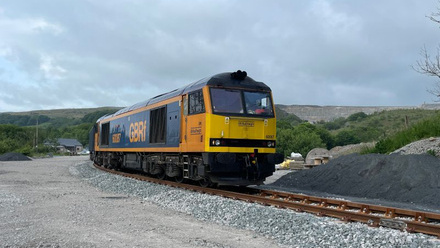The potential of material banks and urban mining in the built environment
Rachel Basha-Franklin, Principal Director of architecture and interior design studio Basha-Franklin, discusses the potential of urban mining and material banks.

The microscope is on advancing sustainable practices within the built environment, and rightly so. Europe, and more specifically the Netherlands, are leading the way in the implementation of real action. This is largely being underpinned by policy and legislation that is proactively starting a whole urban-mining economy.
It is key to incentivise the market, and our governments have the levers to get the private sector mobilised into sustainable material reuse. Key to driving change in the Netherlands has been government tenders, which are now required to have a percentage of reused materials to be able to secure the contract.
Extending small incentives like this into the built environment will quickly turn people’s attention to urban mining. An interesting example is the CIRCL project in Amsterdam, which saw a multi-use, modern space created using urban mining exclusively and sustainable practices.
It changed the game for visualising what could be achieved when adopting this approach and putting it into action.
While it manifested the tangible possibilities of urban mining, it also showed that the importance of its success hinged on all those involved singing from the same hymn sheet. When this happens, costs can be reduced, processes streamlined and a greater step forward into the circular economy can be realised.
In the UK, the commercial CAT A fit-out market is an obvious area that should be addressed urgently, as there are significant levels of unnecessary material and labour waste that could be avoided. The CAT A fit-out is installed by developers to support the sales and marketing of an office space. The work generally involves new metal raised floors, new ceilings, new air conditioning systems and new lighting. This new floor space is sold as a clean, polished envelope for a new CAT B fit-out by the occupier.
Sadly, the brand-new ceilings and lighting generally are sent to landfill almost immediately when the tenant takes possession, as these elements do not match their design and requirements. It’s an incredibly wasteful process. There is an obvious market in waiting to take advantage of these relatively new materials that are currently being wasted. That’s where urban mining, material banks and the circular economy enter the conversation.
Incitements for renewability are all around us in our daily lives. Many of us remember returning drink cans and glass bottles to specific points for some money back.
The cost of holding materials is expensive but everyone is aware of this environmental crime happening around us.
For true implementation of urban mining as standard practice, there must be the resources and infrastructure available to support these much-needed stars of the circular economy.
When approaching a building we should be striving to reuse the materials that we are demolishing, but there is still the challenge of storing and transporting it all.
Certain materials such as stone or brick must often go to a specialist and these factors put barriers in place of an accessible renewable approach. We need technology to be accessible, rapid, and we need to find the materials easily that are available to be mined, stored or reused – think of it like a material bank eBay.
As humans, we have an intrinsic love for personality in things. That extends to buildings and the items found within them. You can find yourself in a French antiques market looking at a beautiful piece of marble that’s been used for years and full of stains, and with that comes a story, personality and depth.
Material nostalgia can be a driving force behind a truly circular economy by shifting the mentality towards this kind of approach. Of course, it is not going to be a fast money-saving solution because of the process costs involved. This needs to be a long-term investment with the whole industry moving into the circular economy, and eventually the level of competition with competitive pricing will make this the first choice for material sourcing.
We are only just at the beginning, but the cogs are turning, governments are taking note and the circular economy early-adopters are showing the way. The important role we have is to nurture and develop it into its full potential by working together and collaborating effectively.







